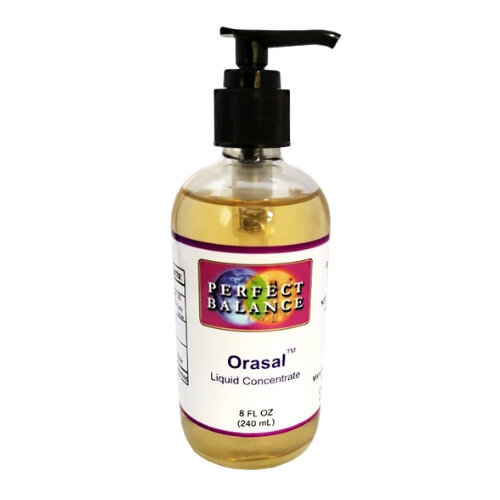Cancer: How Orasal (Salicinium) Works
Reactivating the immune system to fight serious degenerative diseases
Every normal cell in the body takes in oxygen from the blood to perform its function. This is called respiration, an aerobic process that takes place in the mitochondria. Cells take in oxygen and perform their functions by producing a chemical called Adenosine Tri-Phosphate (ATP), and it provides the vital energy that runs the entire body.
Research published in 1966 by Nobel Laureate Dr. Otto Warburg showed that when normal cells were placed in a vacuum chamber and the oxygen content in the chamber was lowered by 35 percent, normal cells had the ability to continue living without respiration. This survival process, which every cell in the body has the ability to do, is called an anaerobic process, meaning without oxygen or respiration.
Your Body Cells
Every cell in the body has a completely different set of enzymes and a completely different way of living than by respiration, and this process is quiescent until needed. We experience this alternate process every time we work or exercise too hard and our oxygen-starved muscles become sore. This soreness is caused by the formation of lactic acid, as some cells live anaerobicly before returning to respiration.
Dr. Warburg realized that if after a few hours, oxygen is added back into the vacuum chamber, the test cells would return to aerobic activity. However, if the cells were held in a reduced-oxygen state for long enough, they would become committed to being anaerobic. That is, if oxygen is depleted long enough, cells lose their RNA and DNA identity and are permanently obligated to being anaerobic cells that can only reproduce other anaerobic cells.
This new way of living for the formerly normal cell is called anaerobiasis, and it is accomplished by a process of fermentation. These changed cells now produce only five percent as much ATP or energy as they formerly did. They now ferment simple sugars—any type of sugar—it makes no difference to a fermenting cell. It is believed that these cells have the ability to develop 19 times the number of sugar receptors on their surfaces as normal cells.
If it weren’t for this lowered energy phenomenon, cancer cells would grow at the same rate as normal cells and we would die very quickly. All dedicated or obligated fermenting cells have a universal enzyme called NAD+ whose function is actually very simple. Whether it is a fermenting cell, a malignant cell, or a placental trophoblast cell, all have a very acidic external environment and an alkaline internal environment.
The process for this is that the NAD+ enzyme travels the inside of the cell, attaching itself to a hydrogen atom and thus becoming NADH–, and then transferring the hydrogen through the trans-Golgi network to the outside by way of lactate and into the bloodstream. Taking the hydrogen atom from the inside of the cell to the outside, this simple cycle is repeated over and over. A lack of hydrogen is alkaline, and an overabundance is acid.
Medical science says there are 210 different types of cells. This means there are 210 possible places—or different tissues—in the human body for cells we may call anaerobic, malignant, or cancerous to grow. The function of the NAD+ enzyme is universal to all of those 210 different types of fermenting cells, however.
Orasal (Salicinium)
Salicinium is a glycome—a complex sugar molecule. The malignant cell sees sugar passing by in the bloodstream, invites it in, and very quickly another enzyme found only in fermenting cells—beta-glucosidase—splits the sugar part off from the complex molecule. The non-glycome part of the molecule, when released, attaches to the NAD+ enzyme and disrupts the fermentation process by stopping dismutation (the simultaneous oxidation and reduction of compounds through some biological process). This is now the turning point in the life of a fermenting cell.
Let us digress for a moment. If one is diagnosed with cancer, the very first question one asks is, “How did I get it, and where did it come from?”
A person forms cancer for only one reason—a lack of oxygen to a certain subset of the 210 different types of cells. This is called hypoxia. Once the malignant process is established, it can then travel to other parts of the body, causing the subject to have two or more types of malignant cells. This is called metastasis, also known as Stage Four cancer.
Up to this point we have mentioned two types of universal enzymes that are specific to fermenting cells—cancer-specific NAD+, and beta-glucosidase. There is also a third—alpha-N-acetylgalactosaminidase, or for short, nagalase.
As soon as a cell is forced into hypoxia and in order to survive by fermentation, that modified cell instantly begins to produce the enzyme nagalase. Remember, this formerly was a normal cell living by respiration, and when it could no longer breathe properly, it started protecting itself by changing over to fermenting simple sugars in the liquid part of the cell—the cytoplasm.
As a simple analogy, it’s much like keeping a night light on—it’s enough light to see how to get around, but not enough to live and work by. It will have to do until the return of the sun (or in this case, the oxygen).
At exactly the same time as fermentation starts, the now sickened, dysfunctional cell must also start protecting itself from the immune system. It does this by producing nagalase. The nagalase enzyme travels through the trans-Golgi network along with lactate at approximately pH 7.
Nagalase
Nagalase has the ability to completely shut down the localized immune macrophage, whose job is to destroy any cell that has been harmed or become dysfunctional. When oxygen is returned to the cell and respiration begins again, the cell may return to normal aerobic health. However, if the cell has been damaged and fails to return to aerobic respiration, it may become a functioning anaerobe, deriving its energy from the fermenting of sugar in glycolysis. Nagalase enzyme activity continues in the condition of this anaerobic cancer process and the local immune system continues to be suppressed by it.
Salicinium, after binding to the NAD+ enzyme, causes the cell to cease the production of nagalase. With nagalase ceasing, the macrophages of the innate immune system resume their functions, which were turned off by the fluids of the malignant process. They recognize the now-sick, unprotected, dysfunctional cell and dispose of it as they would any other cells that are at the end of their life cycle. Salicinium has simply removed the cloak, allowing the body’s own natural immune response to work as it should.
Salicinium does not “kill” or “cure” fermenting cells—only the immune system can do that. Through the use of Salicinium, however, the immune system is returned to a functional state. Since Salicinium is a complex sugar, it is harmless to any normal cell in the human body, because a normal cell cannot assimilate complex glycomes (sugars).
The Salicinium molecule is tiny and able to go to any place in the body that blood or bodily fluids go, including through barriers put up by the body for protection. This nutritive molecule is so small that with each gram of Salicinium that reaches the bloodstream, there are 2,120 quintillion individual opportunities for any fermenting cell to lunch on it. The true number written out would be 2 sextillion, 120,000,000,000,000 quintillion molecules in just one gram, and the standard dosage is 3 grams. It is for this reason that control over cancer can be gained in as little as three weeks of treatment.
Orasal (Salicinium) is a prospective adjunct to conventional chemotherapy, because neither interferes with the function of the other as they perform their duties. The advantage is that when used with Salicinium, chemotherapy can be reduced to a small fraction (10-15 percent) of the usual amount.
Salicinium is a “targeted” molecule for use in any fermenting process which eventuates in lactic acid. Salicinium has a half-life of approximately 24 hours. It has no known side effects other than in those functions allowed or caused by the immune system.



